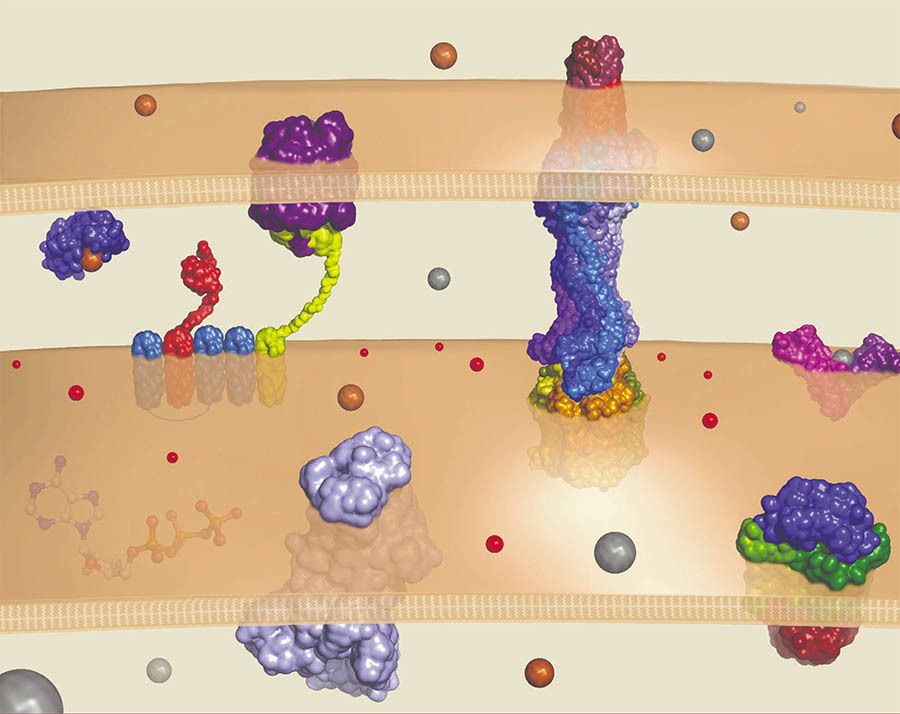
A recent study by a team of Technion Researchers unveiled a comprehensive new understanding of how bacteria meticulously manage the machineries responsible for importing nutrients essential for their survival. This study from a team led by Prof. Oded Lewinson of the Rappaport Faculty of Medicine, which included the graduate student Hiba Qasem Abdullah, the senior research associate Nurit Livnat Levanon and Dr. Tamar Ziv of the Smoler Proteomics Center, details an approach tailored to precisely count protein components of these machineries in Escherichia coli, revealing that their numbers, ratios, and even their locations are finely tuned to optimize nutrient acquisition, especially when resources are scarce. These findings shed new light on bacterial survival strategies and could inform future antimicrobial development.
Bacteria rely on sophisticated molecular machines called ATP-binding cassette (ABC) importers to scavenge nutrients from their environment. These importers are vital for bacterial growth and, in many pathogenic bacteria, play a crucial role in virulence. Each importer is a multi-component system, typically involving a substrate-binding protein (SBP) that captures nutrient outside of the bacterium, and additional transporter components that shuttle it into the bacterium using energy from ATP. However, a precise understanding of how many of each component exists and how their numbers are coordinated has been lacking.
This study addressed this gap by developing an advanced label-free tandem mass spectrometry protocol. "Previous attempts to quantify these importer components were often inconsistent, making it difficult to draw firm conclusions," says Prof Lewinson. "Our tailored methods allowed us to build the most comprehensive dataset to date on the 'ABC importome' of E. coli, detailing the cellular copy numbers of these vital proteins."
The study reveals vast differences in protein abundance linked to need: The abundance of SBPs – the initial nutrient grabbers – varies dramatically, spanning over four orders of magnitude (from a few copies to tens of thousands per cell). This abundance directly correlates with the cell's demand for specific nutrients, with SBPs for highly needed amino acids and peptides being most abundant, followed by those for sugars, ions, and finally, vitamins and metal-chelating compounds which are needed in trace amounts.
Furthermore, two distinct strategies emerged for nutrient import: Importers for abundant nutrients like amino acids, peptides, sugars exhibit a significant excess of SBPs relative to their transporter components, which is crucial for efficiently capturing readily available nutrients. Conversely, Importers for scarce nutrients like vitamins and metal-chelating compounds, counterintuitively show a paucity of SBPs relative to their transporters – meaning the transporter units outnumber their dedicated SBPs.
As it turns out, for such scarce nutrients, "Less is More": Experimentally increasing the SBP levels for the import of the scarce nutrient vitamin B12 impaired nutrient uptake under B12-limited conditions, probably because these SBPs bind very tightly to their transporters, whether they are carrying a nutrient or not. An excess of "empty" SBPs would then compete with "loaded" SBPs, effectively clogging transporters and reducing import of the scarce nutrient. The naturally low SBP levels prevent this "traffic jam. "Furthermore, the team found that SBPs for scarce nutrients do not freely wander around the exterior space and instead, are firmly docked to their cognate transporters, suggesting that for these scarce nutrients, the SBP might not need to dissociate from the transporter resulting in a highly efficient, direct hand-off mechanism.
"These findings demonstrate a remarkable co-evolution of molecular properties, cellular protein numbers, and functional roles," the authors state. "Bacteria have developed sophisticated accounting and assembly rules for these multi-component machines, ensuring they can efficiently acquire what they need, when they need it, without wasting resources or compromising the uptake of vital, scarce compounds."
This detailed quantitative understanding of bacterial ABC importers not only advances our fundamental knowledge of bacterial physiology but also highlights how these systems are optimized, potentially revealing vulnerabilities that could be exploited for novel therapeutic strategies against bacterial infections.
The study, published in Science Advances can be found here: 10.1126/sciadv.adq7470

